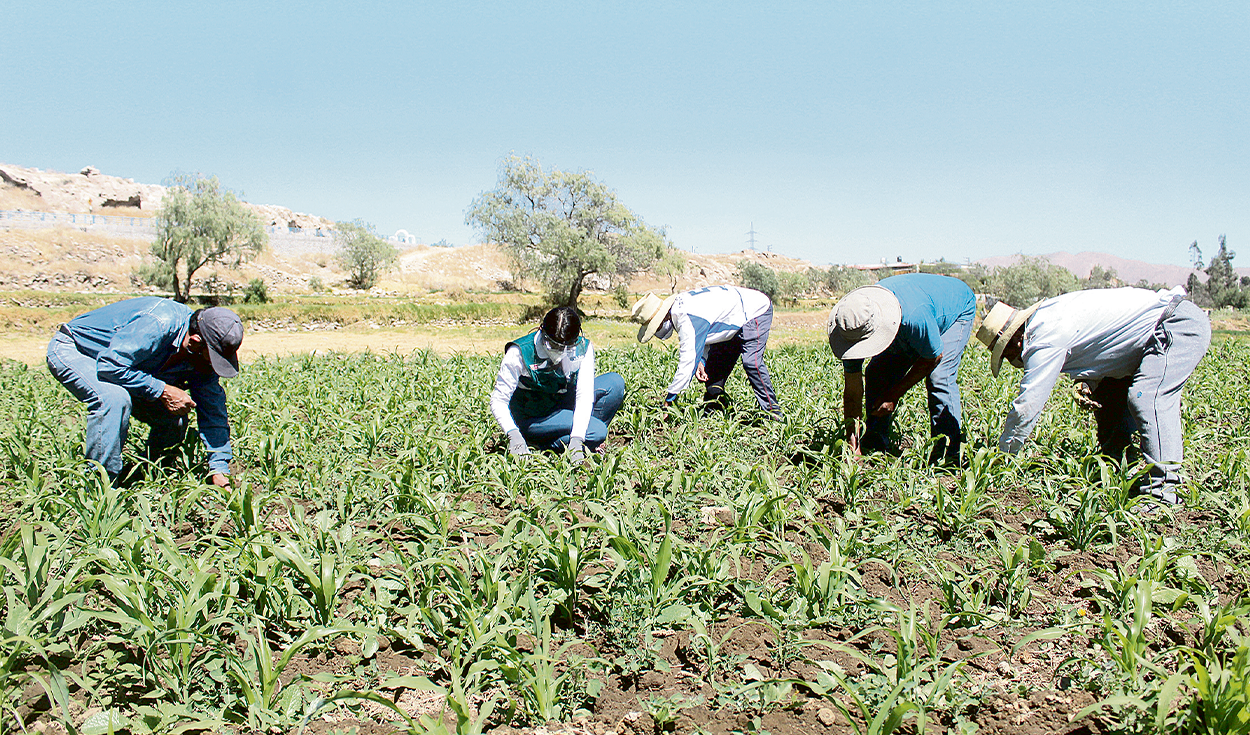
After almost two years, the country’s economic activity grew almost 3% in its monthly evolution. In February it reported an advance of 2.85%, and set the best result recorded since June 2022 (3.40%). It is important to note that in February 2023 the GDP contracted by 0.61%, affected by the protests against the Government of Dina Boluarte.
According to the INEI report, growth in February was led by the mining and hydrocarbons sector (15.9%) and construction (6.41%). However, the fishing and agricultural sectors still continued to be affected by the consequences of the El Niño phenomenon. The Economic Studies Area of Scotiabank explained that, although there was one more day of production as it was a leap year, the growth of sectors such as construction and non-primary manufacturing slowed down compared to January.
Agro does not rise
Agricultural activity, which contributes almost 6% to the national GDP, continued with its negative streak and in February it fell by 1.95%. In the first two months it contracted by 2.42% and in interannual terms (from March 2023 to February 2024) it contracted by -3.46%.
The February result, explained the INEI, is due to lower agricultural and livestock activity. The agricultural products that had the most impact on the result were grapes (-44.78%), mango (-38.28%), asparagus (-13.41%), paddy rice (-6.35%), coffee ( -16.35%), cocoa (-7.75%), oil palm (-8.46%), peach (-31.93%), artichoke (-34.70%), dry grain beans (-38 .44%), lucuma (-24.76%), prickly pear (-14.18%), chili (-15.49%), cherimoya (-51.90%), garlic (-77.49%) and pineapple (-5.55%).
On the other hand, the livestock subsector (-1.2%) was affected by lower poultry supply due to high temperatures and outbreaks of avian flu.
March slows down
For March, economic activity, according to Scotiabank projections, would have registered a variation close to 1%, its lowest level in the first quarter. He added that the calendar effect would work against the expansion of GDP, since this year the Easter holidays were celebrated in March, which meant there were two fewer working days compared to the first quarter of 2023, when these holidays were recorded in April.
“Most leading indicators, such as electric energy production (+0.6%), hydrocarbon extraction (-5.3%), public investment (+23.7%) and new vehicle sales (-28, 2%), reported lower results than those of January and February.
The Peruvian Institute of Economics (IPE), as it points out that, despite the positive performance in the first two months of the year, advanced production indicators anticipate a slowdown in the economy in March 2024.
“According to data from the BCRP, the growth of public spending slowed at a rate of 1.71% in March 2024, after an average increase of 16.84% in the previous two months, in a context of gradual implementation of fiscal austerity measures,” he noted.
Second semester will be better
In the remainder of the year, the Peruvian economy would begin to exhibit greater dynamism from the second semester and, with this, accumulate annual growth of 2.4% in 2024, the IPE estimated.
In February, the mining was dynamic (+17.1%), benefited, in part, from a positive statistical effect, since the social protests in February 2023 affected mining productionparticularly in the southern part of the country.
Source: Larepublica
Alia is a professional author and journalist, working at 247 news agency. She writes on various topics from economy news to general interest pieces, providing readers with relevant and informative content. With years of experience, she brings a unique perspective and in-depth analysis to her work.











